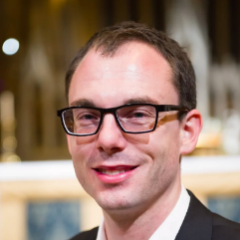It was an evening of contrasts in the Sydney Symphony Orchestra’s latest concert. The program was subtitled Tchaikovsky at the Ballet, referring to the second half of the concert, which comprised highlights from the Nutcracker and Swan Lake; however, the first half was every bit as intriguing.
In a departure from the norm, the concert opened with the string section standing up to perform Osvaldo Golijov’s Last Round. Influenced by Piazzolla, the last great Tango composer, the work is highly energetic, Golijov himself envisaging standing violinists and the flying of bows in a visual echo of the tango. The performance direction of the first movement of the two movement work is Macho, cool and dangerous. The Sydney Symphony Orchestra certainly captured the mood of this music, revelling in the syncopated rhythms, allowing the natural energy of the music to take over. Linking in to the theme of ‘dance’ with the Tchaikovsky to follow later in the program, the work certainly got the evening off to a groovy start!
After this high energy music, we were treated to a much more sultry piece of music, de Falla’s Nights in the Gardens of Spain, which featured Steven Osborne as the piano soloist. The work is not a piano concerto, but rather a piece in which the piano blends with the orchestra, although still retaining its own distinctive soloistic qualities. Perhaps for that reason, at the piece’s conclusion, Steven Osborne was keen not to take too much of the applause; however, it was all richly deserved. Osborne’s mastery of the piano was clear for all to see. He created an extremely clear, but wonderfully lyrical tone which both blended and contrasted with the orchestra where appropriate. For their part, the orchestra produced a variety of colour from the atmospheric shimmering strings to some bold brass playing.
The guest conductor for the evening was American, Andrew Grams, who was conducting the Sydney Orchestra for the first time. After a period as Assistant Conductor of the Cleveland Orchestra between 2004-2007, Grams has since worked with many of the world’s top orchestras. He is certainly a conductor to watch in the future. He certainly did not seem nervous on his Sydney Symphony debut, but instead was completely at ease with the musicians, clearly enjoying the jazzy elements of the first half. He conducted the Tchaikovsky of the second half in a relaxed manner, not standing in the way of the music, but instead enabling it, allowing the almost child-like simplicity of Tchaikovsky’s melodies to shine through. His brisk tempi too helped the music to come to life, and the Sydney Symphony Orchestra responded, playing with impressive ensemble and virtuosity.
The Tchaikovsky effectively showcased the individual sections of the orchestra, from the trio of flutes in the Dance of the Mirlitons in the Nutcracker to the harp in Swan Lake and the beautifully-played oboe solo at the beginning of Act Two. There was also a wonderfully-lyrical violin and cello duet in the Pas d’action as well as some energetic double bass playing in the storm scene. The brass section was on excellent form all evening, most notably the Sydney Symphony’s new principal trumpeter David Elton, who is a great addition to the orchestra. His solo in the Spanish Dance, Chocolate in the Nutracker was impressive for its clarity. The brass climax at the end of Swan Lake was thrilling, led by some of the most exhilarating trumpet playing I have heard in a long time.


